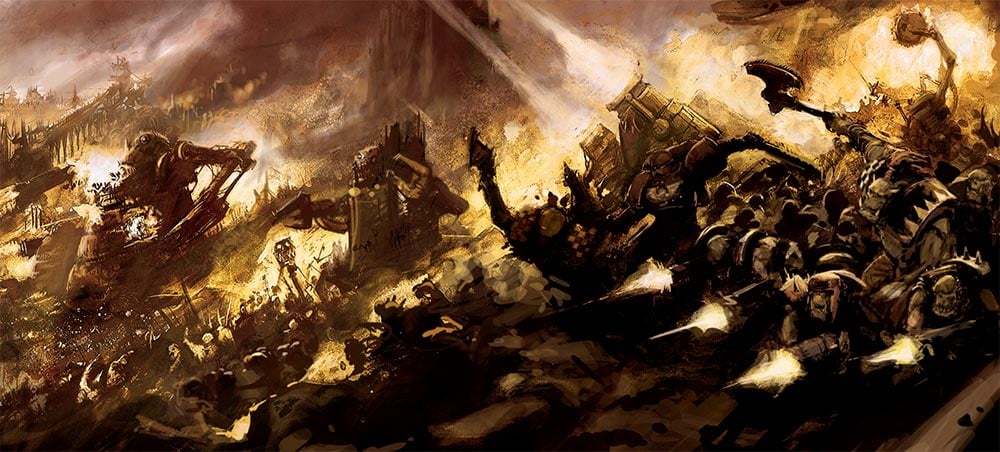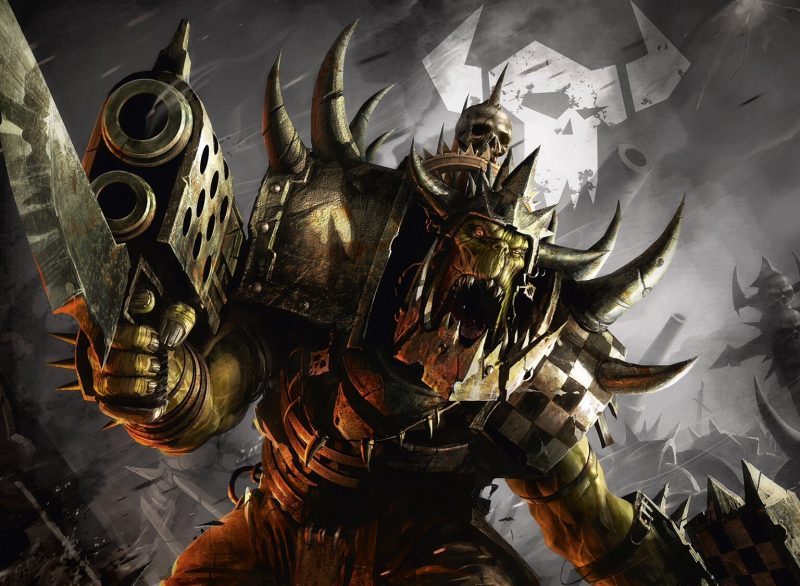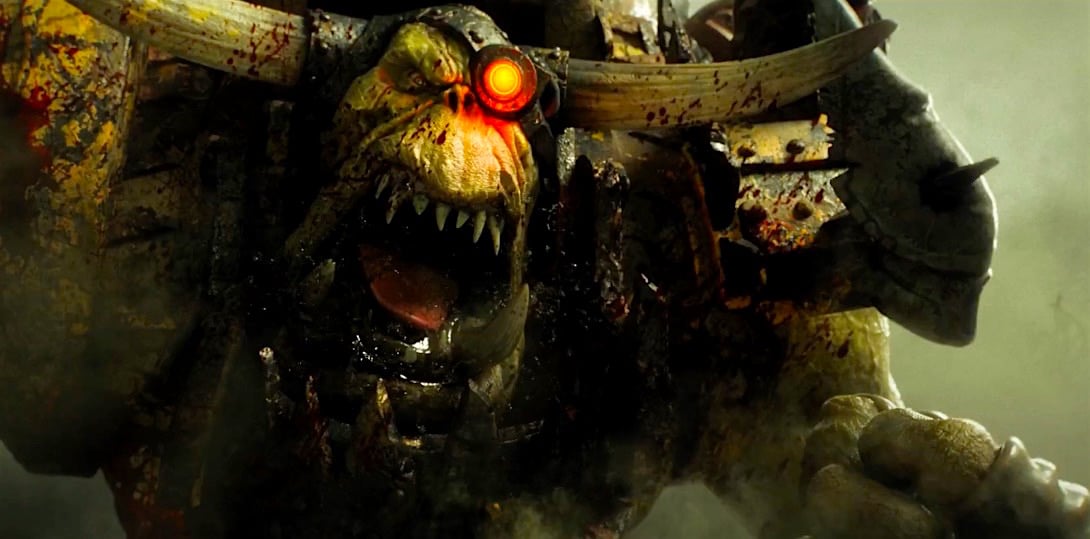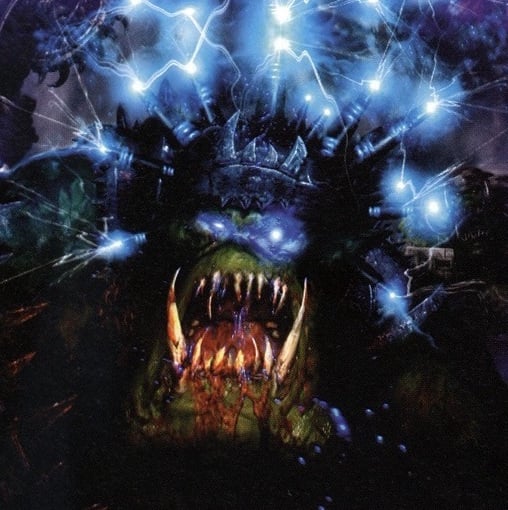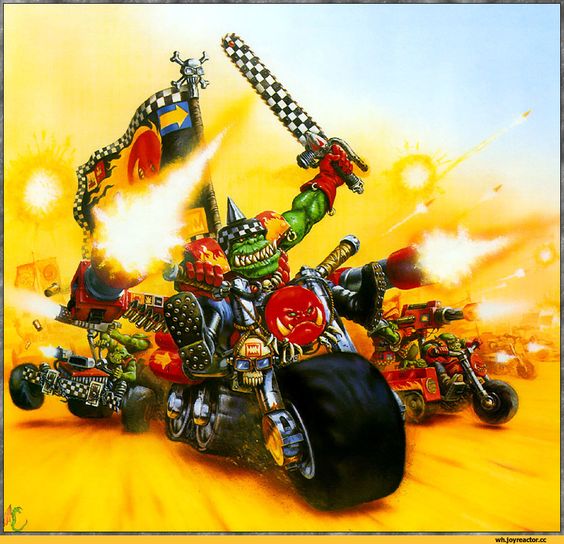40K Lore: The Nature of an Ork


This week Loremasters, we turn to the resilient Orks, who doubtless will be more of a threat in the coming days.
Orks are one of the most difficult Xenos species to eliminate. They can infect entire worlds, and their Waaaagh!!!-like nature ensures that the more they fight, the hardier they become. But knowledge is power (as granted by the Emperor), so let us try and understand these Xenos and see if we can understand the Ork life cycle, and psyche.
Pictured: Psychology.
The Orkoid races are believed to have been genetically engineered millenia ago. Ork legend attributes their creation to the Brain Boyz, a diminutive but extremely intelligent subspecies of Orkoid, who bred the Gretchin to be servants and the Orks to be warriors. Later evidence establishes that the Ork races may have in fact been created by the Old Ones, who are described as creating the Krork as part of a last-ditch attempt to fight off their enemies such as the Necrons and Enslavers. The Orks have had a presence in the Galaxy since that time, and are known to have first battled mankind long before the foundation of the Imperium, tens of thousands of years ago during the Dark Age of Technology. Humanity and the Orks have fought innumerable conflicts over this time and are unlikely to ever stop.
The Ork physiology is simple and robust made to allow Orks to survive the most horrendous injuries and still come back for more.
The term Orkoids constitutes several races or species. Of the Orkoid species the Orks are the dominant race:
Ork Physiology and Biology
Orks are a symbiosis of both animal and fungus at the most basic level. The Orks animal side lives in complete harmony with its fungal side and each compliment the other and come together to form a tough and resilient creature. An example of this is found when comparing an Ork to a human. It appears that the fungus allows the Ork’s body to negate the use of complex internal organs, the immune system and the reproductive anatomy. The fungus therefore allows the Ork to reduce the number of potentially fatal injuries possible, further improving their survivability. The Ork’s animal side however suggests a primitive pack-based omnivorous growth pattern; the Orks relying on each other to hunt for food etc. in a pack. The most interesting feature however, is the lack of any sign for any evolution or evolutionary process. This indicates that the Orks may have been created, or grown, as a result of highly advanced biological engineering. If this is true, then it is likely that the Orks represent the ultimate fighters; strong, tough, durable and aggressive with the biology to back them up.
And when biology fails…there’s always mekanikal partz.
The most striking feature about the Orks is their green skin. Combined with their green blood, Magos Biologis have come to the conclusion that, rather than a complete reliance on the consumption of nutrients in the form of food, Orks have a primitive and basic ability to photosynthesise. This would give them a tremendous advantage over other races as they can reduce their supply lines to ammunition and fuel and all the other parts of war, but without the need to transport perishable goods. The blood of an Ork is also interesting, in that it contains countless distinct fungal organisms and has a chlorophyll high content, with trace elements of carbon and copper. This would account for the green colour of the blood and shows that photosynthesis is an important part of the Ork structure.
An Orks internal organs, noted earlier, are simple and effective, relying heavily on their fungal elements. They have a large multi-chambered stomach which feeds a crude renal system. This combined with a body-cavity filling ‘fungal soup’ (which has the effect of replacing the biochemical organs (liver, kidney, spleen, pancreas etc.) gives the Orks an intensely strong internal system, even though it is quite basic in design. The bones of an Ork are thick, hard and durable, allowing them to sustain high velocity impacts without fracture or damage. The structure is similar to that of humans but the core of the bone contains a spongy fungal matter, replacing the simple human marrow. The Ork brain is quite large, similar in structure to that of a human or Eldar. There is, unusually, a complete lack of fungus or vegetable matter. The most developed part is that of the old brain, controlling more base functions which explain their natural aggression and pack hunting strategies. Finally, much of the Ork body is filled with a spongy mass, presumably to protect what little internal organs the Ork possesses. There are also several gills located around the Ork body, presumably for oxygen absorption.
Ork growth
Orks grow all through their lives; the effect is most notable in the most successful Orks. As the Ork survives combats and wins trophies, the respect of other Orks will produce in him an effect somewhat similar to adolescence in the human male: puts on muscle, becomes more aggressive and assertive, and generally throws its weight around. If it wins the ensuing challenges of single combat, it may become a Nob, a leader of Orks (similar to a Sergeant), noticeably larger and tougher than average boyz. Once it begins to grow, an Ork will generally keep getting bigger and stronger until he is beaten by a bigger or more cunning Ork. Warbosses and Warlords, the rulers of continents and empires, are very large Orks indeed.
The Ork diet
Orks eat fungi of all kinds as well as meat. A particularly favoured ingredient in their diet are Squigs, short for ‘squiggly beasts’ – a variety of symbiotic races about the size of a cat, but legless. Often the only ones consumed are those known as the ‘Eaten Squigs’, a limbless blob which feeds on fungus. Their development is often seen as that of pack predators, although it is unlikely that they are hunting Eaten Squigs, limbless as they are and not providing much in the way of a challenge.
The Waaagh!
Ork behaviour is dominated by the Waaagh!, a gestalt psychic field they generate that has affects on the Ork psyche, as it allows Orks to instinctively recognise who is ‘bigga’ and therefore who is in charge. All Orks generate this field, and it grows stronger as the Orks enjoy themselves, generally while fighting. The Waaagh! helps give momentum (and the name) to the Orks’ planet-crushing Waaagh!s. These Waaagh!s are a cross between a crusade and a pub crawl, with a bit of genocide thrown in for good measure. Thousands of Orks will gather together, drawn to the power of a single dominant Ork called a Warlord, who is bigger and more intelligent than the Orks around him. Then the Orks will set off to find an enemy to fight – any enemy. Ork Waaagh!s will sweep whole planetary systems away and destroy armies and fleets in tides of bloodlust and carnage, and only once the Orks have killed every available enemy will they start to fight amongst themselves again.
Reproduction
Orks have not only survived, they have prospered and are more numerous than humanity. This at least is due in part to how they reproduce. Orks reproduce through the release of spores, which grow into a plant-like womb underground that nourishes the bodies of the various Orkoid species. This is the entire basis of the Orkoid ecosystem, producing first Squigs, then Snotlings who cultivate the Squigs and fungus, then Gretchin to build the settlements, and finally the Orks themselves. This means the Orks, where ever they go, will have an abundance of food, slaves and other resources, a moving ecosystem that supports them as they go on their Waaagh!s.
There you have it Loremasters. A resilient, almost unstoppable foe whose latent power and hardy physiology makes them a dire threat. But forewarned is forearmed–may this knowledge serve you well.
Read more about Ork Dominions.
Dark times loom on the horizon. What threat will rear its head next?

